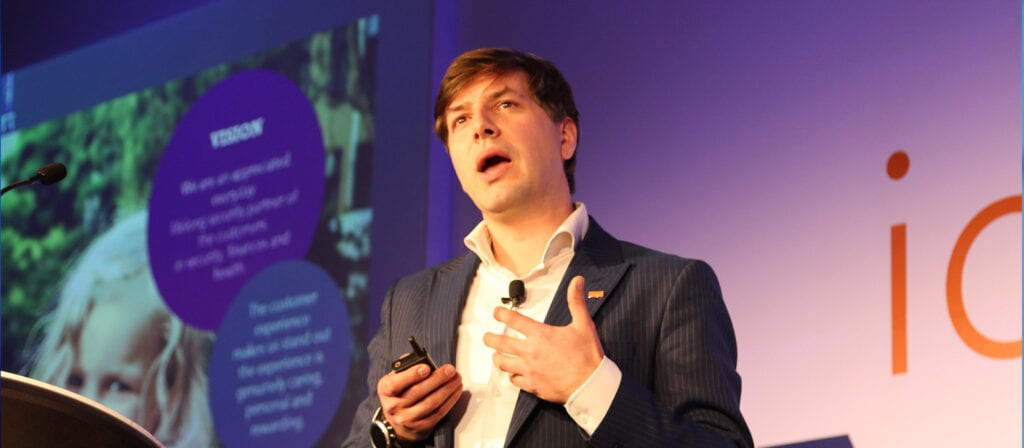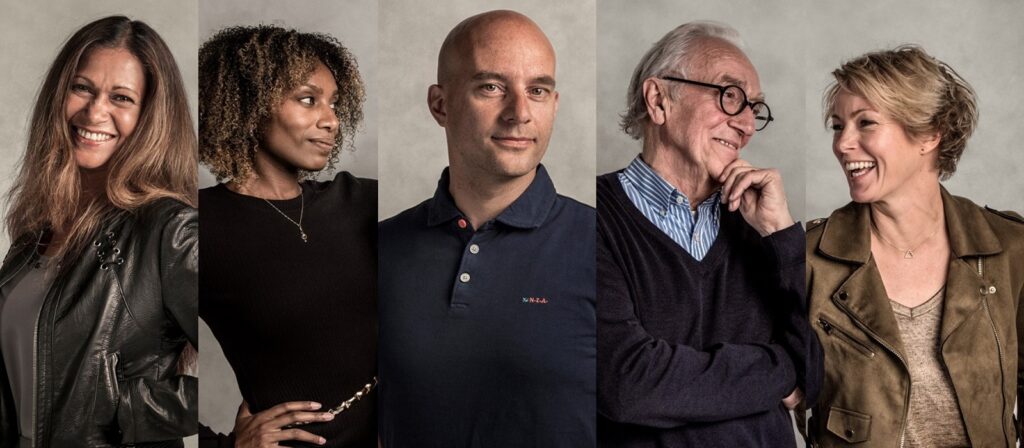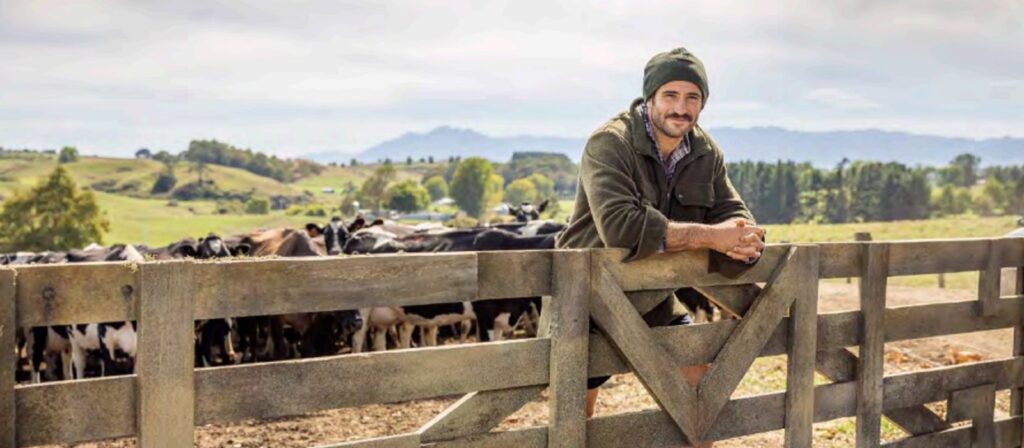Ben Telfer:
Hello everybody, hope you’re safe and well, and welcome to today’s ICMIF webinar, “New business models for the mutual of the future”. I’m very pleased to introduce Lauri Saraste. Lauri is a director at LocalTapiola. Lauri was actually one of our presenters at the ICMIF Conference in Auckland last year and we’re delighted that Lauri is back today to present to you on this webinar. Lauri welcome, thank you for joining us.
Lauri Saraste:
Thank you, Ben. I will take something like 30 minutes I think, 35 maybe, going through the slides and I would be really happy that we will have a discussion in the end and certainly ready to answer your questions, but anyway, welcome everybody from my behalf and also thank you ICMIF for obviously for organizing the meeting in Auckland half year ago but also asking to present this presentation again today with some updates also, as we have done quite a lot in half of the year. So I will start and let’s have a discussion in the end.
As Ben told, we are a mutual group operating in Finland, I think we have a group structure so we are a mutual group operating in Finland and basically responsible for our 1.6 million owner customers, which is basically one third of the Finnish population, a bit less. We have a group market share of 26% and balance sheet roughly EUR 11 billion. We are an old group, the roots date back to the 18th century and this was a time where it was certainly based on mutuality and there was an associations and so on, organizing themselves and that was the beginning of our group. Anyway, now we are operating in Finland, only in Finland but we are really focused on the different regions of Finland and one of our main strategy and mission is to be present in every place in Finland, and certainly with our customers and customer owners.
Recently we have been changing our group to more to the life-long security provider, so we don’t anymore say that we are an insurance group even though obviously that’s what we are, but we are more changing that to say that we want to provide life-long security for our customer owners, so that certainly is the mission for us. We are in halfway of our strategy where we see that this… To become a truly lifelong safety company is something that we want to be, we certainly see steps that we need to take in order to be that, but maybe my main message would be that we keep customers in the very center and our main targets and what we try to do is certainly based to our customer needs and how we see the customers’ needs now changing, so this is the strategy.
I will say a few words about our strategy and the customer focus but in this presentation I will go more to the clear examples of what we have been doing as I think that will be more fruitful. We have been mapping the customer in the very center when we have been asking ourselves what we want to become, what are the important things we need to do? What are the main challenges for us? We see that as we operate in Finland, but we see that there is changes in the population, I think this applies also to many other countries. We see that the globalization will change the insurance and this is something we need to take really careful into account. Sustainability has been coming more and more to the very table of when we do strategical decisions, when we try to set our targets, we see that we need to take into account sustainability really carefully and it is something we value.
And technology will be something that we need and we see obviously that the future generations are really more and more closely using technology. We see that societies are changing in the way that needs the new technologies and this is something that we need to both understand and use. But anyway, with all this we see in the future and we try to focus to what are the customers expecting from us, how we will best help them and there might be new needs and new challenges for us when for instance, to be able to be for our customers every weekday and so on.
Okay, but maybe going further and also trying to be more specific, certainly we see that how we actually are trying to do this is that we want to act local and we want to promote the wellbeing in the different areas where our customers are, so certainly the local aspect is something that we keep really closely in our thinking. We see that the service needs to be easy, I think this is quite self-evident but anyway, it’s not an easy thing to do so it needs a lot of internal work to actually be able to go to this direction as we all know that there is lots of new things to take into account also. You need to outsource and there’s regulations and so on.
We see that the forecasting is something that needs to be done in-house, but also we need to have conversations with our customers for them to understand what are the different steps in their life and how to best prepare for their lives and through this journey, we certainly want to be able to be that partner what we define in our strategy. Customer benefits are certainly something that we see as an important factor, we don’t pay any dividends if we make profit, we see that it needs somehow to help our customers, and that’s in the key targets also.
Going just bit more deeper, I think we could put this in four different boxes which certainly the service aspect is one, we know that we need experts to provide the services but then we need to be local, we need to have a good claim service and that needs to be efficient and fast and then we need to be for our customers basically every day, and also with different kind of ways. Whether it’s customer service in person or then some web-based service. We see that there’s lots of focus on the benefits, in pricing and we keep a close eye obviously. We want to suit individually the needs of the customers, this is something that we need lots of our internal understanding, but also understanding of the customers, so we are doing a lot to try to understand our customers thinking and their needs and with that data, to be able to provide better services and obviously also products.
Then in the very last, we need to modernize, we need to develop what we do and yes, lots of things coming from the digital needs. We are really focused on the health side and certainly trying to automatize what we do. So anything, putting in the four box and maybe trying to go a bit deeper to what we have been setting, how we have been setting our targets and how these show as quite specific needs. But anyway, I will provide some examples on these ones.
The one slide I would bring to you is obviously the current situation and this is something that we all have been in lockdown and there has been different needs in countries, we all know this. Maybe just mention to you things that we have been doing, maybe as a first example but it is something that we are all in our minds, the current situation, the COVID-19 so I thought that I would also bring up something that we’ve been doing. In Finland we haven’t… There’s many countries had been hit bit more harder than us in Finland. We also, it’s a distant country and we don’t have that big cities so there’s a lot that we can actually… There’s lots of good things, if there is some good things in the current situation but certainly, but anyway we also have been seeing the lockdown hitting our economies quite hard and therefore trying to help our customers in different ways has been really important for us.
For our corporate customers obviously trying to bring the flexibility when it comes to payments has been really important and this is something that we have been thinking a lot. Obviously we have had difficulties with liquidity in the market but anyway, to being able to provide the additional flexibility has been really… We have had a good capacity, basically provided good impact, and this goes to corporate loans and additional payment times and so on. We have a lot of real estates in our balance sheet, maybe 20% actually, so certainly being a major investor in that side we have seen it to support the tenants is really been an important way to provide some help. We are closely connected to the Finnish Red Cross and here I think in the very start we provided one million aid to different organizations and I think most of this went to Finnish Red Cross.
Then different webinars to our customers, people are wondering what happens and people are unaware of the situation in different ways when it comes to society, so markets or health and so on, so we have been trying to use our expertise and provide webinars to our customers which has been quite a good thing. And then different regional actions and there’s a long list of different ways our regional companies have been able to look to specific needs in that area and trying to give some support. So anyway, I think this was an example of going to the COVID-19, but then going to more of the other examples of what they have been doing as we have been… I told about the customer needs and when we have been identifying the customer needs and our strategy, how to answer those needs, then certainly we have been doing a lot to try to do something for our customers to what we believe.
Here are a few examples. The first one is on life insurance when I think we had five challenges in life insurance. First one is to how to actually be relevant and create commitment, and we learned that many of our customers, most of our customers actually say that they see as a natural thing to combine the wellbeing services with life insurance products, so it was something that seemed to be placed in our products, and then obviously we wanted to be part of our customers everyday life. It’s not certainly an easy one and when you’re talking about mortality or disability products, but if one get to this point I think then you are really succeeding to do something because this would be something really important and then you also can learn about your customers.
If you have healthier customers I think that helps in many ways and that’s certainly a win-win, and what we have been learning with our products which I will say a few words, that actually over 70% of our customers have been improved their lifestyles which has been a really, really major thing for us and when we challenge ourselves that we want to provide something for our customers, this is certainly been a success. With the products we actually, we got that good attention that people came to the office and asked for the products which was something that we never ever experienced before and there was a lot of people coming for the new life insurance products with the health aspects, and this was certainly a good result for us.
Then the price, that’s something but we don’t want to compete with price, we certainly want to have a product that makes good sense for our customers, they appreciate the product and we don’t want to compete with the price. I think that was one of our important angles here. But anyway, yes and the products and I think you have also have a lot of alike products with the health aspects, but maybe I think we have learned quite good lessons of these products and it is something to note because I think one way we were really unaware is that where our customers felt like that they could share their data, and we got quite good result actually where customers, if they see that using the data is useful and you can create that trust there then this might not be that big a problem actually.
The other thing was we needed to do, and we still need to do a lot to get our customers motivated, so there’s a kind of a gaming aspect there but to be able to get the customer’s attention constantly it needs a lot of new things that you are bringing to that concept, so certainly that’s been another good take-away. And then yes, the technology’s changing quickly so we are aware of that, so this needs constant development but it has been a good success actually. Maybe another example is from the health side where I think we certainly had the old health insurance products there and then we have the healthcare providers, but we went quite a long way to be able to make this virtual clinic between the old products and the healthcare providers to be able to serve better our customers. So our idea was that we need to have most of the traffic in the virtual clinic and then less in the actual hospitals and so on. This obviously needs a lot of working inside with the data, with the applications, with having nurses answering the phones, and so on.
So anyway, we have been able to make this virtual clinic and therefore I think that has been a major success and change in the way we have been providing the health insurances. And to go a bit more specific, I think we had and we still have the old product layer, insurance products is something that we need to… That’s the way we do business, that are the products that we have obviously but then to focus on the modular service layer with the health account application and then having partners but then trying to get customers using the applications, talking with us. We are learning from our customers and then using the old products in the behind.
The health service model has been one big improvement from our side, we have seen that our customers have been appreciating a lot and we have these help services where we get the first contact from our customers comes to the help services and then we can figure out what will be the best way to serve the customers. And the customers love the service as this has been also helping their way to use the insurance products more.
Then going to the third example, is in our security. How we think about IT security and certainly this is something that we have been doing in-house, but we have two programs, one is the Bug Bounty program and the other is Hack Days and the idea is that we want to search for vulnerabilities in our services, and we have been starting to work with white hat hackers and create relationships with them. So the Hack Days, and that has been running from 2015, we have invited hackers into our systems or similar to our systems, but anyway, we have been inviting them to search vulnerabilities from our systems and with that we have been learning a lot from where to focus and how to fix problems.
The other thing is the Bug Bounty program where we have an ongoing program where if there’s some hacker finding a vulnerability outside from the group systems, then depending on the finding, we actually pay money for them. And by this day we have been paying nearly 200,000 dollars for these white colour hackers. Maybe the last thing is that we see information security as a sustainability matter also, so in our sustainability goals we have a route for this one and we see quite important actually to do things, and learn from these vulnerabilities and get better IT security to our systems. There’s a website also if anybody interested.
Then going to more on the responsibility side and on our asset managers. Our asset management have been pioneering the responsible investment work for many, many years actually and they have been doing a lot of internal work to try to understand the different measures that could be used to identify what is sustainable, what is not. We know that, or at least people in Europe, there’s lot of political work going on to trying to draft the taxonomy on sustainability and new reporting requirements are coming, but anyway. In our asset managers, we have been doing a lot of internal work to identify and also, trying to understand ourselves what we want and what we don’t want, what we see as sustainable and we haven’t waited to this European development which obviously will change our ways also, but at least we have a good basic way already here.
We need to exclude investments, we need to say where we avoid and how much we avoid in investing and then we also want to say where we do invest and it needs a lot of classification, it needs a lot of identification and so on. So it’s a big work but we have got a good response, we have got awards and so on of this work, so certainly a good example. But anyway, with sustainability, we see by doing this work we can actually enhance returns. We are a long-term investor, we see that is an important piece of the asset management to be able to do it well and properly. We also see the risk management aspect in the long-term, we see that the world is changing to some direction where obviously the risks are different depending on this.
Then yes, there’s on the reputational issue which we see as an important. We are responsible for our customers and we want to keep a good reputation and also, so it certainly is something that we have been valuing a lot. Then on the savings side, we have been thinking a lot on the savings, how to change our way to provide savings. I think many, many years we had quite basic savings products and then I think there has been four, five years there, we did quite much to try to change the way we offer savings to our customers and also try to understand the better the needs of the customers when they are starting savings, and these are really basic needs. I think what we have been learning here is that many people just think about that they have enough for everyday living I think as a really basic need, and then people who even think about savings, we have been saying that try to have twice your salary saved and we have some basic products, bank account like products to offer for our customers that they get this second step on the route to savings.
After this, yes you can think about saving to some certain purpose and after that maybe preparing even for pensions, and then you might have different ways to think about where you invest and so on. But it’s really baby steps in the start and I think this was one of the big innovations for us. The other thing is that we have been trying to identify the mindsets of our savings customers and what we have learned is that we can basically see, quite roughly say that there’s four type of people. Those who are really determined of what they do, they have plans and so on and how to help these people. Then there’s the trusting ones, when we need to poke them a little bit to understand the possible needs of the future and the discussion is more like that. Then we have the floaters who have a different situation in their everyday finances and there’s maybe ways to have discussions to make more stable future. And then obviously the last one are the balancers to support, to build some trust and methods for setting and achieving the longer term goals and dreams.
When identifying the different mindsets, it helps the discussion with customers and I think being able to identify these kind of groups, this has been helping a lot for us when we think about the products, when we think about the sales aspects and so on. Good, and then maybe one of the example is the savings product family where we have the different risk types, but then these all different products taking the… I think there’s three different categories, there’s the liquid assets, whether it’s bonds or more on equity or high yield, then we have a guarantee trade product there. As one part brings some balance and then we also provide liquid assets, whether they’re real estate or private equity for our customers, and it is something that we have in our balance sheets so we are able to provide, give them the possibility to invest in these asset classes also.
Good, okay but that was maybe the savings part. Maybe on some other examples we have been doing this, we have been doing a lot of work to stop with the water leakages, we have seen that much of the claims, there have been a lot of claims on different water leakages and to provide this kind of equipment to actually stop this has been really an improvement when it comes to these claims. The help service model is something, I told you about it in the health side, we have been bringing this to the pet insurance, but we’ve seen that the help service model is something that people understand, it means a way that there is a number or application or service where customers can connect and then we can see what’s the best way to serve their needs and what’s the problem.
The last examples is on robotics where we have been doing a lot of developing this in-house. We have been changing the ways we do internal processes and here actually I have a video. So these are the last examples and then we can go to questions and answers.
Ben Telfer:
Thank you so much. Great video to end as well, really appreciate you going through so much content today and showing how LocalTapiola is integrating a new operating model to support this strategic transition and also how you’re keeping mutuality at the core of your business. We do have a number of questions in. Lauri, the first question for you: how do you measure the success of the changes you have made through adapting your business model?
Lauri Saraste:
Well that’s a good one, we do have obviously strategic goals and ways to measure. I think one of the most important measures is when we measure our customer happiness or customer related measures when we are be able to get that kind of data, that how our customers feel about what we do. I think these are more important measures for us than the basic financial measures which obviously yes, we do follow those but anyway, I think it goes to different ways that we are asking our customers about these type of questions and then I think we obviously reward yourself if we can get good results from our customers but we also get lots of… We have been thinking ways that how we can… I thought about that locally, there’s different ways that it’s not only one measure but there’s different ways that we can do in different regions, different ways to have conversations with our customers. So there’s lots of that data but anyway, I would say that’s the biggest thing.
Ben Telfer:
Thanks Lauri, another question. Would you consider financial wellbeing and services supporting to have the same impact on mental health to that which lifestyle services have on physical health?
Lauri Saraste:
Well I think that’s a difficult one. I think we have been doing different things but maybe having a holistic understanding of our customers when they have different products, whether they are more financial or more on health and how the customers would actually appreciate the ways we do or measure us against on what they had, whether they have only health or savings products or life products. I think the one target what we have is that we do group our customers into what kind of products they have and we have targets that we usually are likely to increase the variety of the services that we can provide for our customers, usually we see more stickiness in the customers, we see the customers are more happier when they are more using more variety of our products, but to try to say something specific on whether it’s more health or more fin products, I actually don’t have that data or knowledge, sorry about that.
Ben Telfer:
No problem Lauri, another question for you, well this is almost two question that have come in and I’m going to try and merge them together. With LocalTapiola growing digital capabilities and this shift to wholistic prevention strategy rather than just selling insurance, do LocalTapiola still plan to keep a local presence? And then the second question relating to that, is how do your agents and brokers feel about this shift from LocalTapiola away from selling insurance to prevention, and are they still part of your future distribution model in the digital age?
Lauri Saraste:
You know that’s certainly a good question and yes, we have been talking that a lot here. How we see it, and I think this certainly is in our strategy that we feel that the local presence is absolutely important for us, there’s different types of people in Finland, we have learned a lot at our local companies, they are in a really close connections to the customers and they actually know their customers really well. I think to have this and then to be able to bring the new digital ways to be part of that human connection. I think that’s the way we see it, so what we have been doing and yes, we see the digitalization but we also see that to be able to build the trust with the customers’ needs some discussions. We need that human connection when we go through the life-long security type of thinking and path and how we would be able to help our customers and that’s the way we can connect the customers and we can create the trust.
But certainly, we need to use the digitalization to be able to do that because there’s that much data, there’s different ways to use. But it’s not only digital, we certainly see the local, human aspect in that one.
Ben Telfer:
A follow–on question to that, do you think that your agents and your brokers will need to have some upskilling because they will no longer be providing the same services to your members?
Lauri Saraste:
You mean new kind of expertise?
Ben Telfer:
Yes, I think more expertise on prevention as opposed to just selling an insurance product.
Lauri Saraste:
Yeah, I think they are. There’s certainly two things, the other is that we went through quite a long path and we’re still in that when we ask yourself what we actually mean that we are a life-long security provider and I think this was something that we said that everybody in our staff needs to have an idea of that. There was lots of thinking and discussions and lots of ways to get that thinking to our people.
But also, it has different ways that it shows, so certainly it’s not one-way thinking, so that’s something we have been doing a lot. But the other thing is obviously yes, expertise, we do a lot so that our sales peoples, experts can have a better understanding of all the aspects that needs to be understood and the last example of the automatization was something that we see also there’s whole processes that help people to concentrate to other things and that will be the way to actually be able to give room for time and room for new ways of thinking. Maybe just going a bit there forth but certainly, yes we have been seeing this strategy has been something that has taken a lot of time and digitalization with this automatization process of help is part of that.
Ben Telfer:
Yes, I can imagine. Just time for a couple more questions. Did you look at wearables or fitness device integration for your health and wellbeing program, or is it more important to have holistic content and partnerships?
Lauri Saraste:
Yeah, I think in the very start we did provide wearables, but then quite soon we cheated the focus a bit off from the physical wearables so it’s more I think… How we see it that it’s certainly more on the concept, more of having the connection with customers and being able to be part of their life with that application or providing new things or something like, there’s a challenge, let’s run to Brazil together with a group and when we get there, then we can help, give some aid for children’s hospitals or something like that. So there’s different stories and people can relate that, be part of that story, and I think to get that mindset over the life insurance product, that has been the goal much more than certainly, more than the wearables. We do have partners and people get discount from different things but then it’s more that what they want to choose, what they keep important when it comes to wearables. But for us, we are concentrating on the mindset, certainly.
Ben Telfer:
Sure, another question. You mentioned bonus programs for customers, could you expand on this?
Lauri Saraste:
Yeah well, in different companies in the normal side obviously, every year we provide discounts. The discounts are measured in different ways that obviously we give these discounts to our customers from their yearly payments, and then in the life side, we do give extra benefits which will come from our investment profits to our guaranteed trade savings, for instance, pensions and savings products what we had. Then we see also that not only money but also different ways that we can give additional support, additional services, we can also invest into some of our own products and ways to do something for our customers more, so there’s indirect ways that we see we can help customers. Yes, money’s understandable but when it comes to long-term commitment to your customers, it might be more wiser actually to concentrate to offering products that might need some… That the product points and the products are such that we would not see for instance, a listed company providing that kind of products.
Ben Telfer:
And that brings us nicely to I think the last question we’re going to have time for today Lauri, and it asks, many insurers are talking about this shift to become customer-centric and embedding ESG, and this sounds like something LocalTapiola has been doing for many years. How do you plan to stay ahead of the market?
Lauri Saraste:
In sustainability you mean?
Ben Telfer:
Yes, just I think it means that there’s a growing trend of lots of insurers saying they’re becoming customer-centric, but LocalTapiola have been doing this for 100, 200 years. How do you plan to stay ahead of your competitors as they start…
Lauri Saraste:
Yes. Obviously there’s a lot of big competition when it comes to our customers, they have a lot of other applications and other things to think about. What makes us the important partner that they would want to have in their life, people need insurance but that’s also… There’s some mandatory insurance products but anyway I think we don’t rely on that, that people need to have by laws, something that’s not a good way of creating the good partnership with our customers. But anyway, I think the first one is certainly to try to learn a lot from our customers and how they think about, what they appreciate. This changes in time, we know it and that’s why we are also at the same time trying to have this forward-looking idea of what is changing our customers’ thinking and if there’s some new values or is it more on, for instance, on the digitalization or so on. Obviously you need to have an expectation of that one but then trying to keep our own development projects so that we would be in the same track.
There’s lots of open questions there, also in Finland we see that we’re only operating and see in Finland we don’t look from the global angle, even though there’s lots of globalization obviously that we see, also changing the Finnish society, but anyway yeah, I don’t have a clear answer to that one but it certainly needs a lot of internal work and growth on predicting and then really careful thinking of the strategy and the development projects.
Ben Telfer:
Thank you very much Lauri, I think that’s all we’ve got time for today. I’m sure if anybody’s got any further questions or people watching this recording, please get in touch and we’ll be happy to connect you with Lauri or LocalTapiola to learn more about this great strategic transition and how they’re developing new business models for the mutual of the future.
Thank you everyone for joining, and thank you again to Lauri. Have a nice day everyone and please stay safe. Goodbye.
The above text has been produced by machine transcription from the webinar recording. ICMIF has made every effort to ensure that transcriptions are as accurate as possible, however, in some cases some text may be incomplete or inaccurate due to inaudible passages or transcription errors. Listening to or watching the webinar recording will allow you to hear the full text as delivered during the webinar but this is available in English only. Our transcriptions are provided to enable members to select the language of their choosing using the dropdown menu above.





